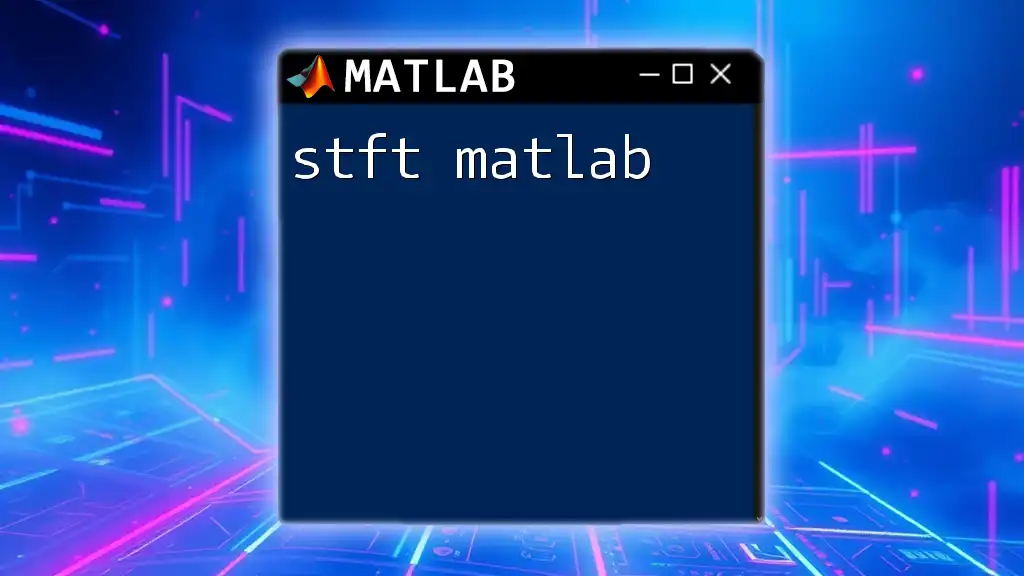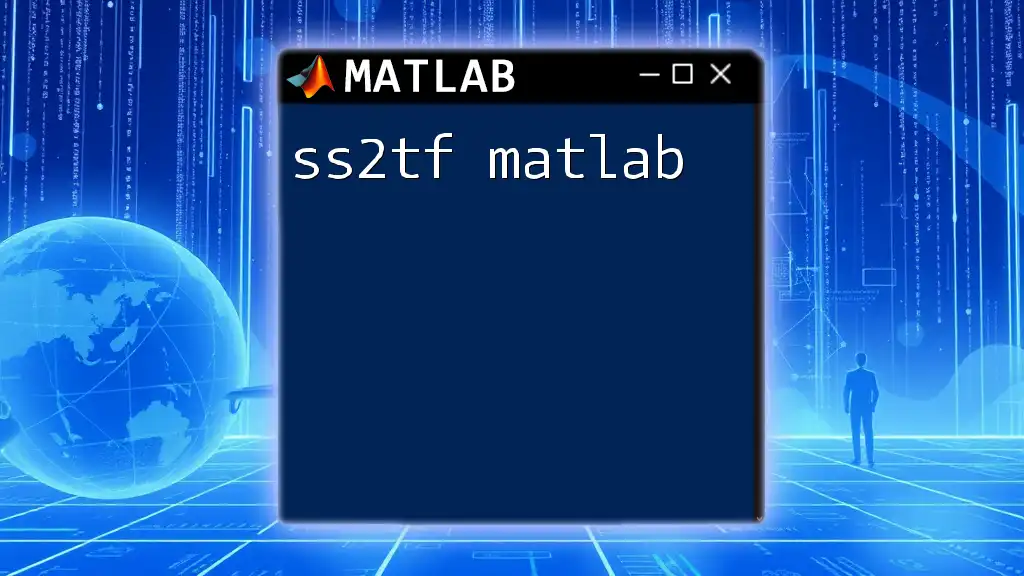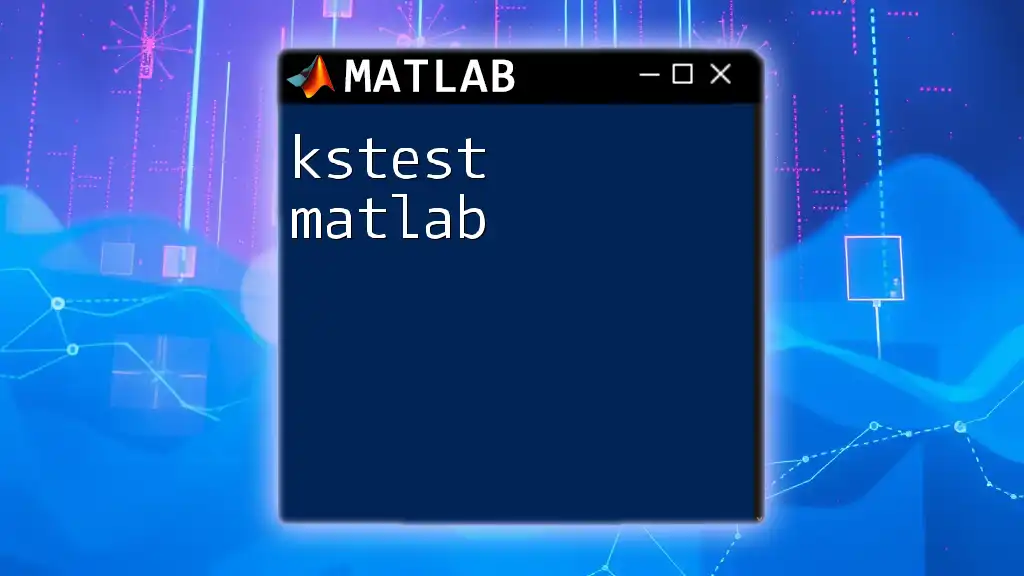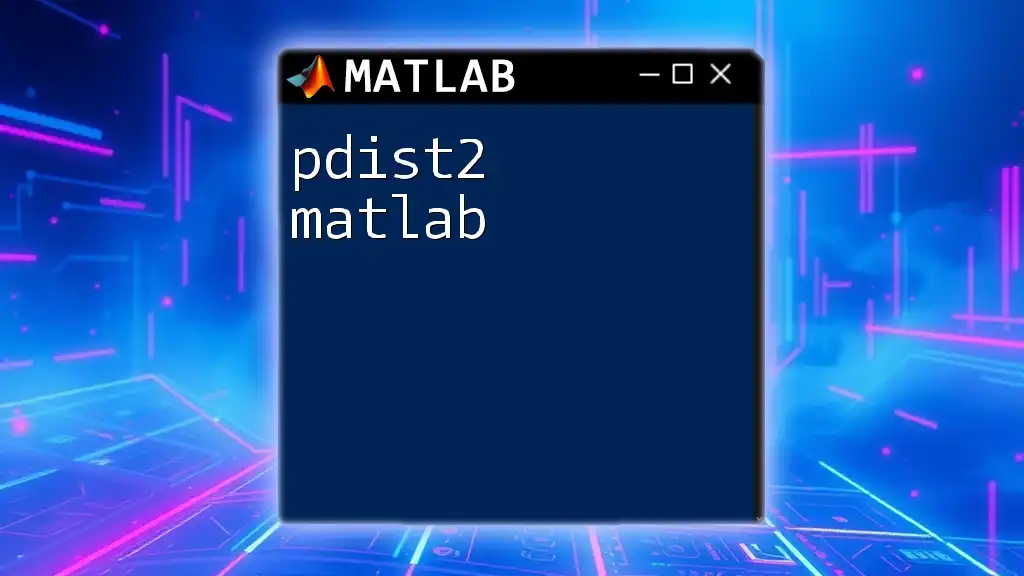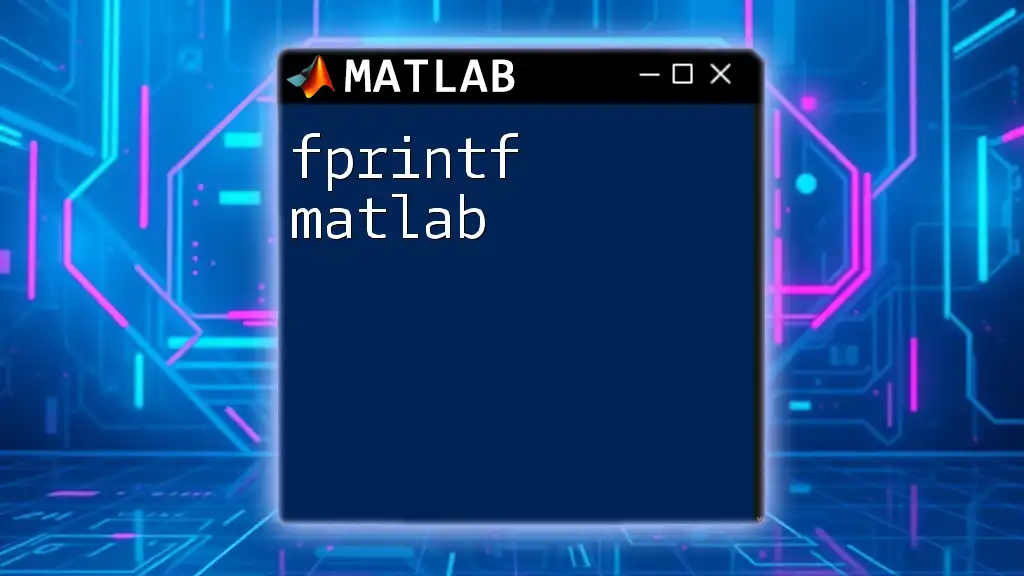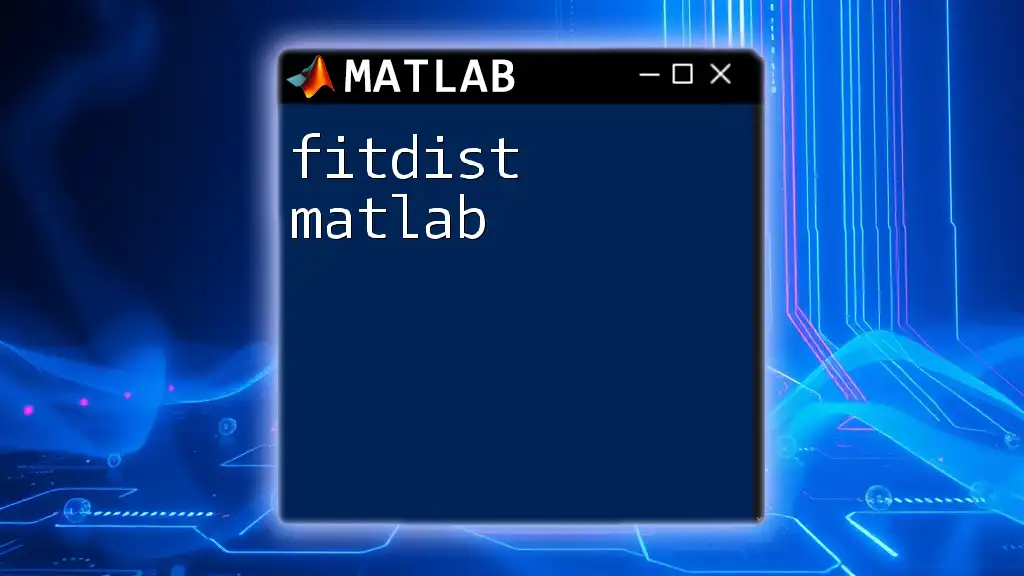The Short-Time Fourier Transform (STFT) in MATLAB allows you to analyze the frequency content of non-stationary signals over time by breaking the signal into overlapping segments and applying the Fourier transform to each segment.
Here's a simple example of how to implement STFT in MATLAB:
% Define parameters
fs = 1000; % Sampling frequency
t = 0:1/fs:1-1/fs; % Time vector
signal = chirp(t,0,1,500); % Example signal: a chirp signal
% Define STFT parameters
window = hamming(128); % Window function
overlap = 64; % Number of overlapping samples
nfft = 256; % Number of FFT points
% Calculate STFT
[S, F, T] = stft(signal, 'Window', window, 'OverlapLength', overlap, 'FFTLength', nfft);
% Plot results
figure;
surf(T, F, 20*log10(abs(S)), 'EdgeColor', 'none');
axis xy; view(0, 90);
xlabel('Time (s)');
ylabel('Frequency (Hz)');
title('Short-Time Fourier Transform (STFT)');
colorbar;
What is STFT?
Short-Time Fourier Transform (STFT) is a technique widely used in time-frequency analysis of signals. It allows us to analyze the frequency components of a signal as it varies over time, offering a detailed representation of non-stationary signals. Unlike the standard Fourier Transform, which provides a global view of frequency content, STFT provides a localized view, making it useful for analyzing signals that may change characteristics over time.

Understanding STFT
Definition of STFT
STFT breaks a signal into smaller segments, analyzes each segment using Fourier Transform, and presents the results as a matrix of frequency and time. The result is a time-dependent frequency spectrum where both time and frequency domains are represented.
Mathematical Representation
The mathematical representation of STFT can be described by the following equation:
\[ STFT(x[n]) = X(m, n) = \sum_{k=-\infty}^{\infty}x[k]w[k-m]e^{-j\omega n} \]
- Variables:
- \( x[n] \) is the input signal.
- \( w[k-m] \) is a window function applied to the signal, which controls the time duration of the Fourier Transform.
- \( \omega \) represents the angular frequency.
- \( m \) indicates the time shift.
The concept of windowing is crucial as it helps reduce spectral leakage, allowing for better frequency resolution.
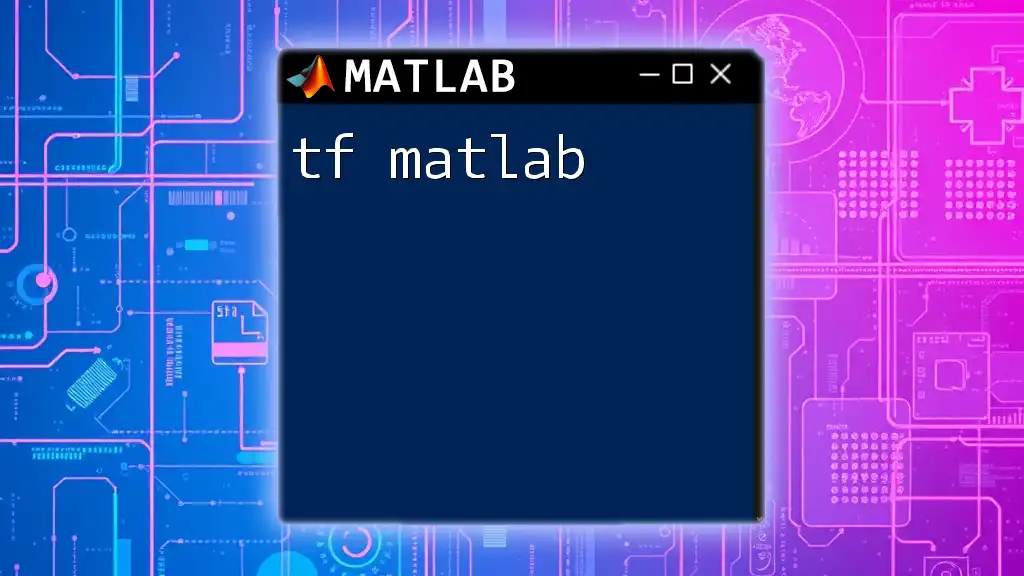
Setup for Using STFT in MATLAB
Prerequisites
Before diving into STFT in MATLAB, ensure that you have the necessary version of MATLAB installed along with the Signal Processing Toolbox. Familiarity with basic MATLAB commands is recommended to facilitate learning.
Getting Started with MATLAB
To begin, simply install MATLAB and open it to create a new script. Use the MATLAB command window for quick experiments with data before embedding them into a script.

Implementing STFT in MATLAB
Step-by-Step Process
Loading and Preparing Your Data
First, you need to load your signal into MATLAB. Here’s how to do that:
[y, Fs] = audioread('example.wav'); % Load audio file
In this code, `y` contains the audio signal data, while `Fs` stands for the sampling frequency. Knowing the sampling rate is essential for further analysis, particularly when you interpret the results in frequency domain.
Choosing Window Parameters
Windowing is essential in STFT, as it defines how much of the signal you analyze at a time. The choice of window type (such as Hamming, Hanning, or Rectangular) can significantly influence your results.
Here’s how to define a Hamming window:
window = hamming(256); % Define a 256-point Hamming window
Choosing the right window can help reduce spectral leakage while maintaining sufficient temporal resolution.
Performing STFT
Using the MATLAB Function
To compute the STFT, you can directly utilize MATLAB’s built-in `stft` function. Here’s a simple command to perform STFT:
[S, F, T] = stft(y, 'Window', window, 'OverlapLength', 128);
- Parameters:
- `S`: the complex STFT matrix.
- `F`: the frequency vector.
- `T`: the time vector.
- `OverlapLength`: this parameter controls how much overlap there is between successive windows; a typical choice is half the window length.
Visualizing STFT Results
Once you have computed STFT, visualizing the results is essential for understanding time-frequency content. Here’s how you might plot the magnitude of the STFT:
imagesc(T, F, abs(S));
axis xy;
xlabel('Time (s)');
ylabel('Frequency (Hz)');
title('STFT Magnitude');
colorbar;
This code plots the absolute values of the complex STFT matrix, providing insights into how frequency content evolves over time.

Practical Applications of STFT
Audio Signal Processing
One of the most prevalent applications of STFT is voice activity detection. By analyzing how voice signals change over time, you can effectively distinguish between periods of speech and silence, allowing for better decision-making in automated systems.
Biomedical Signals
STFT also finds a significant role in analyzing electrocardiogram (ECG) signals. By examining the frequency characteristics of ECG over time, clinicians can identify abnormalities in heart patterns, facilitating early detection of medical conditions.

Troubleshooting Common Issues
Common Errors and Fixes
When working with STFT in MATLAB, it’s common to encounter errors related to window lengths or overlap settings. Ensure that the window length is appropriate for your signal; a very short window can lead to a loss of frequency accuracy, while a very long one may miss important temporal information.
Tips for Improved Accuracy
To improve the accuracy of your STFT results, consider the following:
- Use a sufficient overlap between successive windows, typically 50% or more.
- Experiment with different window types to find the best fit for your specific signal characteristics.
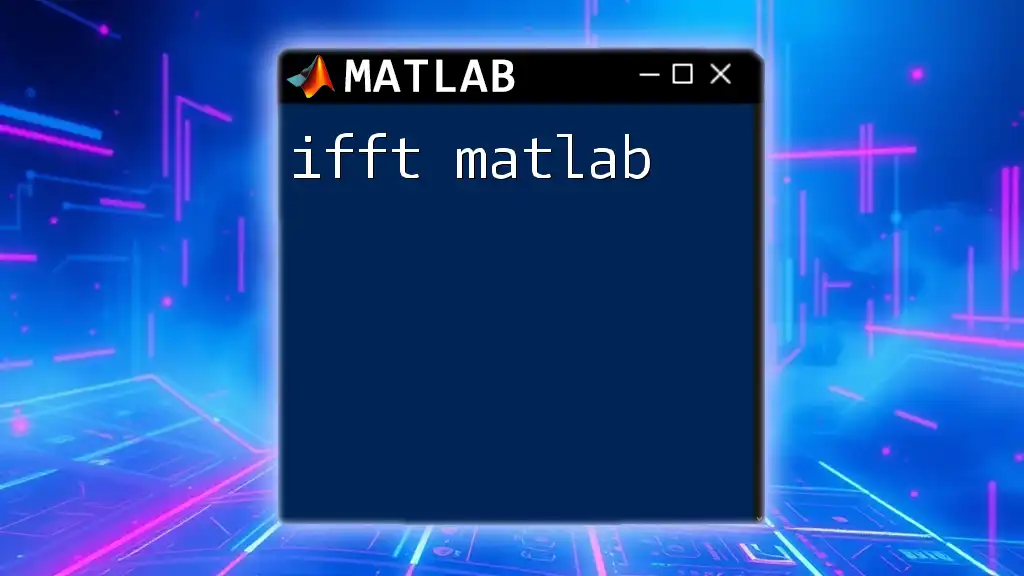
Conclusion
STFT in MATLAB is a powerful tool for analyzing signals, especially those that change over time. By grasping both its theoretical basis and practical implementations, you can leverage STFT for various applications across domains, including audio processing and biomedical signal analysis. Dive deeper into STFT to uncover its many capabilities and how it can enhance your signal processing projects.
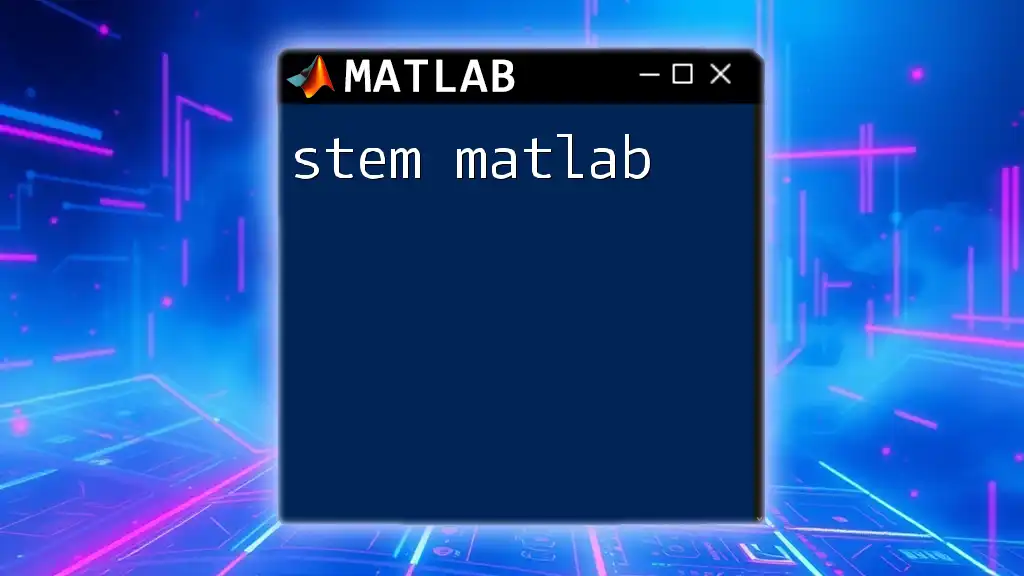
Additional Resources
Recommended Reading
Look into textbooks on digital signal processing that cover STFT, or witness examples online through reputable sources like MATLAB documentation and academic articles.
Online Forums and Communities
Engaging with forums like MATLAB Central or Stack Overflow can provide assistance, insights, and a sense of community to those delving into STFT and MATLAB programming.

FAQs about STFT in MATLAB
What are common parameters for the STFT function?
In MATLAB, common parameters for the `stft` function include:
- `Window`: the type of window applied.
- `OverlapLength`: the overlap between windows, typically half the window length.
- `FFTLength`: the number of points for the FFT, which influences frequency resolution.
How can STFT be used in real-time applications?
STFT can be employed in real-time applications by processing incoming signals in small chunks. This approach allows for immediate analysis of sound events, enabling applications such as live voice recognition, audio coding, or dynamic noise reduction.
What are the limitations of STFT?
While STFT is effective, it has limitations:
- It suffers from a trade-off between time and frequency resolution, known as the uncertainty principle. Improving time resolution diminishes frequency accuracy and vice versa.
- For non-stationary signals that are highly complex, other methods like Wavelet Transforms may provide better insights.
STFT in MATLAB, when mastered, opens up avenues for advanced analysis and robust signal processing solutions.

